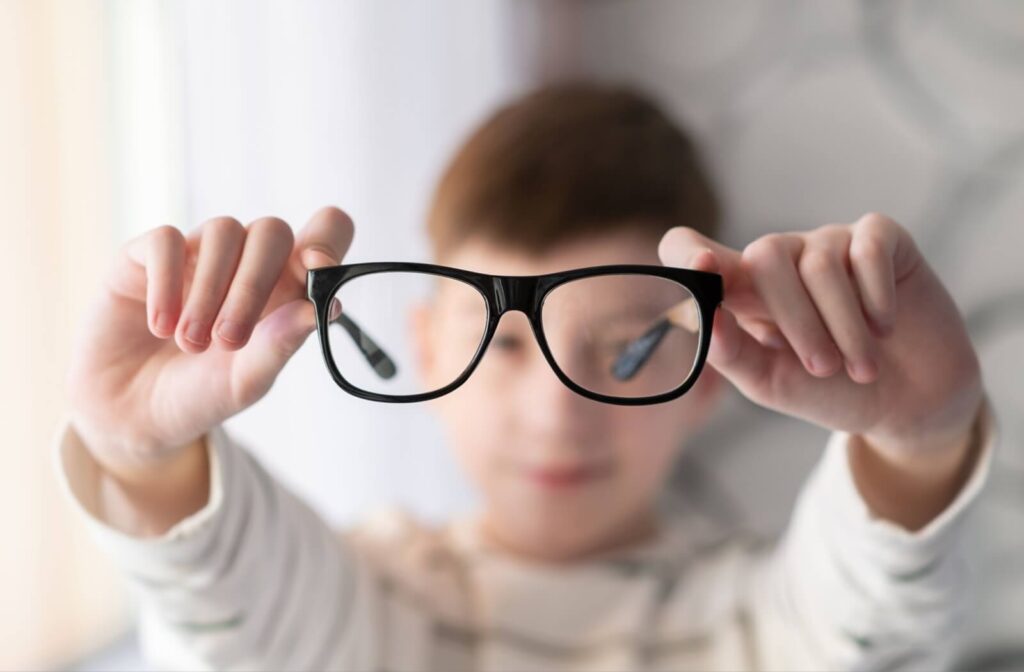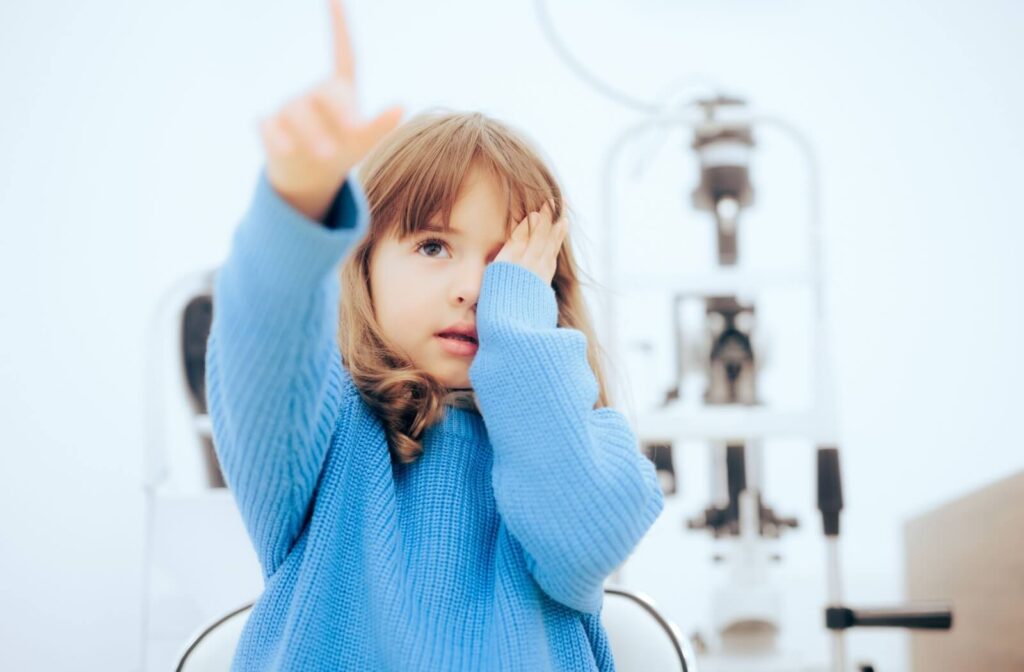You may know myopia by its more common name—nearsightedness. It’s a word we hear often, but it’s not always clear what myopia means for your vision over a lifetime or what you can do to support your eye health.
While myopia progression often slows down in early adulthood, myopia is still a condition that evolves with you through the stages of life. Understanding these changes helps you stay proactive about your vision care.
What Is Myopia & How Does It Affect Vision
A Simple Look at Nearsightedness
Myopia happens when your eye focuses images in front of the retina instead of on the retina. This makes objects in the distance appear blurry, while objects up close remain clear. Think of it like a camera that can’t quite focus on a faraway landscape but takes great close-up photos.
Myopia can affect everyday activities like reading a whiteboard at school or seeing road signs clearly. The most common solution is glasses or contacts, which work by helping your eyes focus correctly. This brings distant objects back into sharp view.
Common Signs of Myopia in Kids & Adults
The signs of myopia can be subtle, especially in children who may not know their vision is different. It’s helpful to watch for a few common symptoms. Your family might notice behaviours such as:
- Frequent squinting to see distant objects
- Headaches from eye strain
- The need to sit closer to the television or the front of the classroom
- Difficulty seeing things far away, like a clock on the wall
How Myopia Changes Through Different Life Stages
Myopia in Childhood & Teen Years
Myopia often first appears during the school-age years. This is a time when children’s eyes are still growing and developing. Because of this growth, a child’s prescription may change more frequently.
Regular eye exams are important during this period to track these changes. An updated prescription helps your child see clearly for school and activities. It also keeps a record of how their vision is progressing.
During childhood, it’s also possible to slow or manage the progression of myopia.
Myopia in Adulthood
For many people, myopia tends to stabilize in their early 20s. The frequent prescription changes that occur in childhood often slow down or stop. Your vision may remain fairly consistent for many years.
However, modern life—full of screens and close-up tasks—can still cause eye strain. Even if your prescription is stable, you may notice tired or dry eyes after a long day of work. These are separate symptoms with separate solutions, which we discuss below.
Vision Changes in Your 40s & Beyond
Around age 40, you might notice it’s harder to read small print up close. This is a normal, age-related condition called presbyopia, and it affects almost everyone. Presbyopia occurs as the lens inside your eye becomes less flexible with age.
Presbyopia is different from myopia, so you can have both at the same time. You might find yourself holding menus farther away while still needing your glasses to see across the room. Fortunately, we have different lens options to help you see clearly at all distances.

Myopia Care & Modern Solutions
Vision correction has come a long way. Myopia control glasses and contacts are designed to help slow myopia progression for children and teenagers whose vision is still changing.
A comprehensive eye exam is the first step. As your optometrist, we can assess your child’s vision and eye health. Then, we can discuss possible options for myopia control.
For adults, myopia control normally isn’t an option, but corrective lenses and laser eye surgery are both potential options.
Practical Tips for Eye Health & Myopia
Balance Your Screen Time
Our eyes work hard when we stare at digital screens for hours. You can help reduce eye strain by following the 20-20-20 rule. Every 20 minutes, take a 20-second break to look at something 20 feet away.
This simple habit gives your eye muscles a much-needed rest. It can help your eyes feel more comfortable throughout the day. It’s a small change that can make a big difference.
Get Outside & Play
Time spent outdoors can be beneficial for eye health, especially for kids. Natural light and looking at distant objects give eyes a break from close-up work. It’s a fun and healthy habit to encourage for the whole family.
Schedule Regular Eye Exams
An eye exam is about more than just checking for 20/20 vision. These exams allow us to monitor changes in your prescription and your overall eye health. Regular visits create a timeline of your vision history, which is very helpful.
Your Partner in Lifelong Eye Care
Consistent eye care helps us see the big picture of your vision. By seeing you regularly, we can spot small changes over time. This proactive approach helps support your sight through every stage of life.
Think of it as a partnership for your eye health. You tell us about your daily experiences with your vision, and we use our tools to see what’s going on. Together, we work toward keeping your eyes healthy.
A Local Eye Doctor for Your Family’s Needs
Having a local eye doctor in Spokane and Chewelah means you have a resource right in your community. We get to know you and your family’s specific vision needs. From a child’s first eye exam to an adult’s multifocal lenses, we’re here to help.
Myopia changes over your lifetime, but you don’t have to manage it alone. At The Eye Care Team, we’re dedicated to supporting your family’s vision at every age. Schedule an appointment today to discuss a personalized plan for your eye health.



